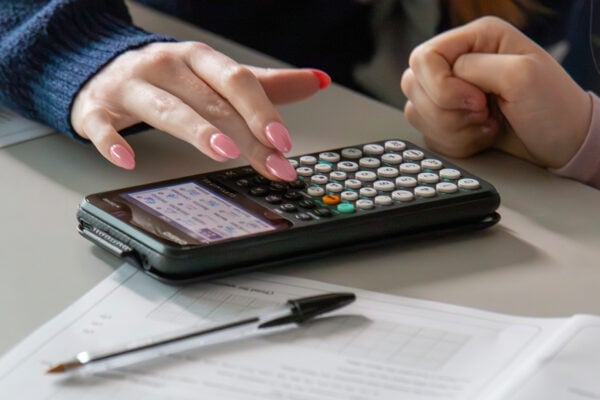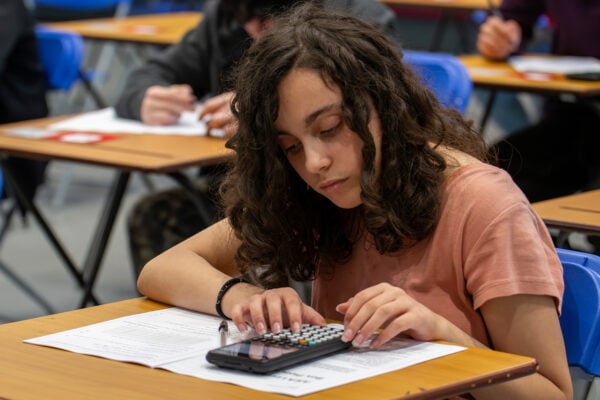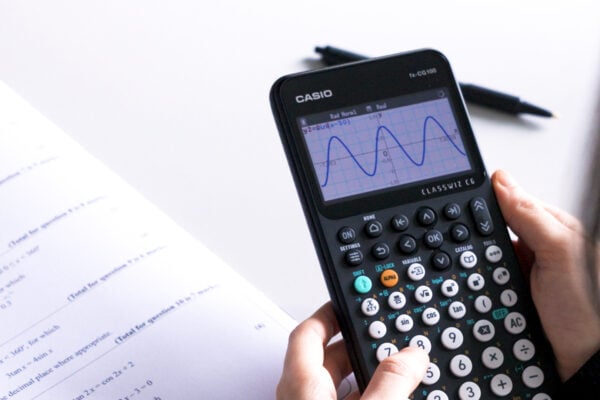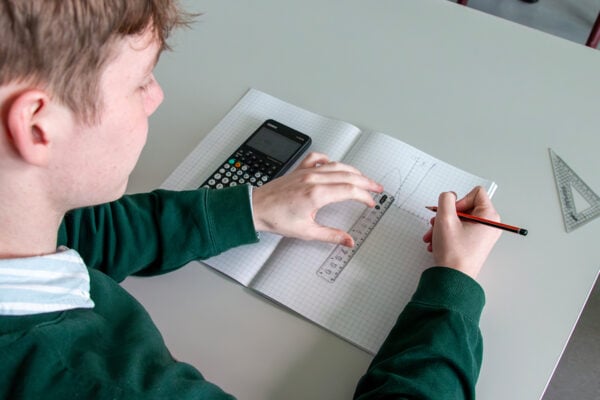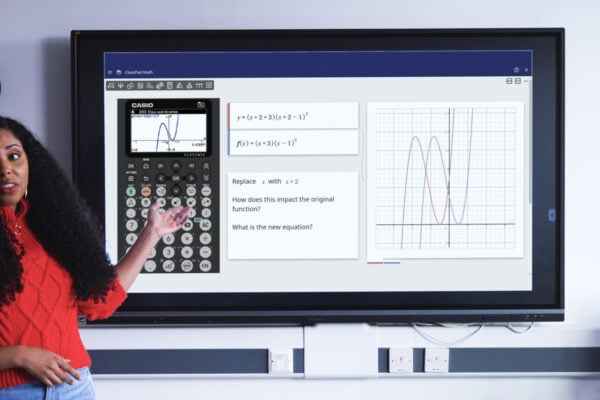GCSE calculator: options, features and best models in 2025
Help your students choose the best GCSE calculator. Compare models, key features and functionality to support success in GCSE maths.

Choosing the right GCSE calculator can help students tackle the new challenges they face from year 10 onwards.
As well as deepening their understanding of topics like algebra, probability and statistics at this stage, they also need to demonstrate this knowledge in longer, more demanding GCSE maths exam papers.
GCSE maths calculators: what options do students have?

Scientific calculators
A good scientific calculator is the minimum requirement for GCSE maths students. As they embark on more detailed examinations of the topics that comprise the mathematics syllabus at this stage, they will need access to trigonometric functions, at the very least. This is in addition to basic calculator features such as square root and cube root functions and parentheses.
The Casio fx-83GT CW and fx-85GT CW provide the basic functionality needed for GCSE maths, with key applications including:
• Menu operation
• Log, exponential, trigonometric and hyperbolic
• calculation
• Equivalent ratios
• Standard deviation
• Quartiles
• Regression
A good scientific calculator is the minimum requirement for GCSE maths students. As they embark on more detailed examinations of the topics that comprise the maths syllabus at this stage, they will need access to trigonometric functions, at the very least. This is in addition to basic calculator features such as square root and cube root functions and parentheses.
Our entry-level GCSE calculators are the fx-83GT CW and fx-85GT CW. These models are ideal for those sitting foundation papers, with essential functionality and applications including:
• Menu operation
• Log, exponential, trigonometric and hyperbolic calculations
• Equivalent ratios
• Standard deviation
• Quartiles
• Regression
These handsets also feature natural maths displays and, in the case of the fx-85GT CW, solar power.
Students sitting higher GCSE maths papers will benefit from the more extensive functionality of the fx-991CW, our most advanced scientific calculator.
This handset is a particularly good option for those looking to gain confidence in solving equations, offering the necessary functionality to check solutions to:
• Linear equations
• Simultaneous linear equations
• Roots and vertices of quadratics
• Quadratic inequalities
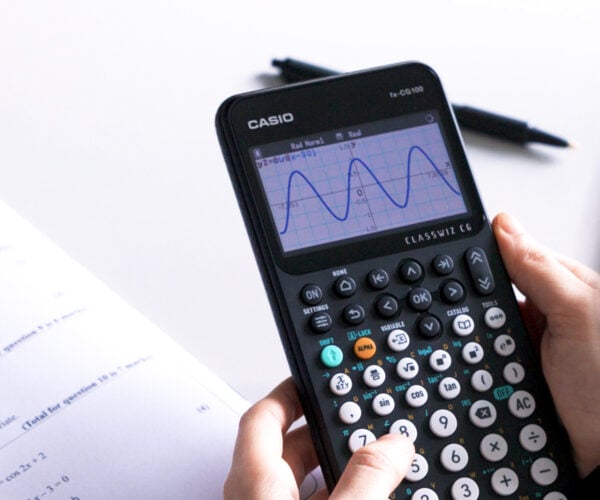
Graphic calculators: are they needed for GCSE?
Calculators with graphing capabilities aren’t necessarily a requirement for GCSE maths, particularly for students sitting foundation papers.
However, we are seeing an increase in adoption of graphing technology at Key Stage 4.
Those who are studying for higher papers and planning to progress to A-level maths could benefit from starting to use graphing technology as early as possible.
The Casio range was recently extended with the launch of the fx-CG100, our most advanced graphic calculator approved for UK exams. This handset’s key layout, user interface and navigation are consistent with the wider ClassWiz scientific family, enabling an easier transition between technologies for GCSE students.

Key features to look for in a GCSE calculator
Calculation
GCSE calculator features can vary widely, so it’s worth knowing which core functions to expect and which advanced tools could support further learning.
Essential maths functions
All Casio scientific calculators provide the core functionality required to explore the key components of the syllabus and answer GCSE maths exam questions. That includes fundamentals such as log, exponential, trigonometric and hyperbolic functions.
Calculation functionality and solving equations are areas where the differences between handsets can become clear. Students who have access to a more advanced scientific calculator can extend their learning and prepare for the challenges of A-level maths by experimenting with features such as:
• Complex number calculations
• Numerical calculus
• Polynomial solutions
Data functionality
Analysis and understanding of data is an area where GCSE maths students need to demonstrate deeper comprehension during exams. Knowing how to use a scientific calculator opens up opportunities for them to explore topics such as standard deviation, regression and quartiles.
For instance, in a higher paper statistics question, a student could use the standard deviation functionality on an advanced scientific calculator to help them gain accurate insights from a set of data.
Advanced functions for higher-tier students
In addition to its equation and inequality solving functions, the fx-991CW is the only Casio scientific calculator equipped to perform probability distribution calculations. Students can use this to work out probabilities for binomial, normal and Poisson distributions.
This is an example of how more advanced features on their calculator can introduce students to new types of mathematics and encourage them to make connections between them. Those who want to continue studying maths beyond GCSE will benefit from this way of thinking at A-level.

How do calculators help students in GCSE exams?
Knowing how to use a GCSE calculator efficiently can be a big help to students sitting maths exams, particularly when it comes to making the best use of their time and gaining reassurance that they’re working along the right lines.
Preparing to succeed
To make the most of the tools available to them and take full advantage of the time available in their GCSE maths exam papers, students need to be sure they’re ready to use their calculator.
That means setting aside as much time as possible to familiarise themselves with their device, so common functions and processes become second nature and can be executed quickly in the exam. Practicing with past papers is a good way of getting students accustomed to using their calculators to tackle exam questions.
It’s also important for candidates to check whether their calculator has an exam mode and to activate this in advance so they’re fully prepared on the day.
Crucially, students also need to ensure their calculator is approved for use in UK exams.

Working quickly and methodically
The ability to work under timed conditions is clearly a key factor in any candidate’s performance in a GCSE maths exam. It’s vital, therefore, that students can take full advantage of any tool that lets them perform complex calculations quickly and proceed through the steps required to reach the correct answer.
Being accustomed to using a GCSE calculator can also help students work systematically and test out different approaches to the problem they’re facing. This can lead to them displaying their methods and reasoning in their answers, which can be just as important as getting the right final outcome in a maths exam.
Checking answers
Many students will understandably be feeling the pressure in their examinations. The ability to check their answers and gain peace of mind that they’re on the right track can make a big difference to their confidence and general outlook in the exam environment.
This is one of the clearest benefits to be gained from using scientific calculators such as the fx-991CW, which has the capability to check answers to linear equations, quadratics and more.
You can find out more about the differences between the models in the Casio range by doing a calculator comparison.
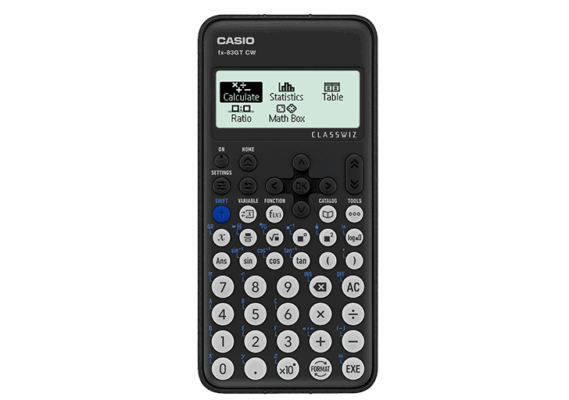
Best GCSE calculators compared
Model: fx-83/85GT CW
Ideal for: KS3 & KS4 students (up to GCSE)
Key features
• High‑definition natural textbook display
• Menu navigation
• Scientific calculation
• Statistics
• Tables of values
• Equivalent ratios
• Number line inequalities
• HCF/LCM
• Probability simulations
• Battery‑powered
• Protective clip‑on cover
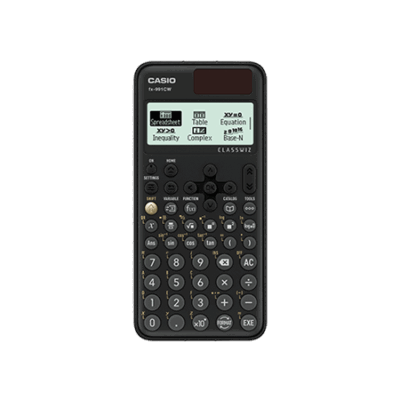
Model: fx-991 CW
Ideal for: Higher GCSE students
Key features:
All the essential functionality needed for GCSE maths, plus:
• Equation solving
• Inequality solving
• Probability distributions
• Complex numbers
• Matrices
• Vectors

The fx‑83GT CW and fx-85GT CW are ideally suited to KS3 and KS4 students focused on the foundations of GCSE maths. They have the functionality to support all core topics, with the added benefits of a clear display and user‑friendly interface and navigation.
Students pursuing higher-tier GCSE maths and looking ahead to A-level will be well-served by the fx-991CW, thanks to advanced features like spreadsheets, equation solving and calculus.
For more specific, lesson-focused information on our scientific calculators and their various applications and functions, visit our resources centre.
Blog
- Graphing technology
- Scientific calculators
- Exams
- Curriculum
- Classroom
- Students
